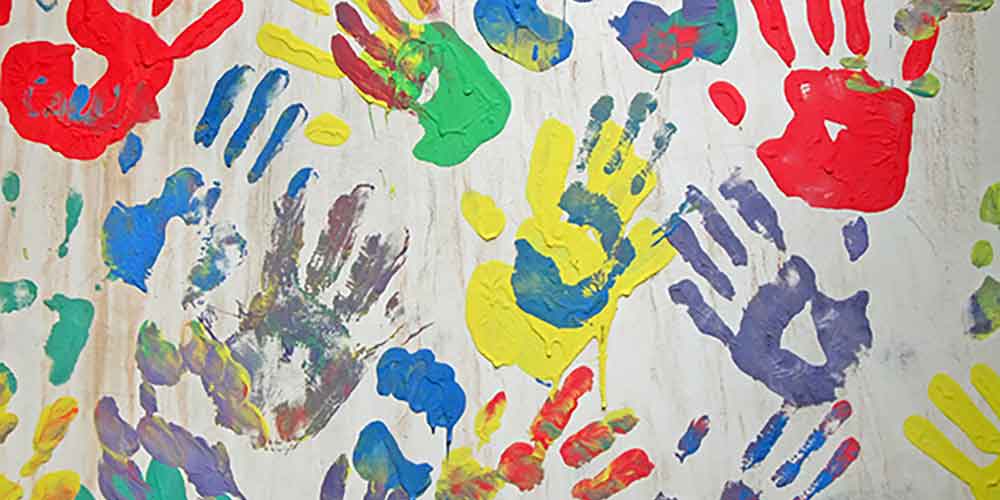Does everyone belong? Cultural diversity at work
Harmony Day
Every year, we celebrate 21 March as Harmony Day. With its official mantra of ‘Everyone Belongs’, the date mirrors the UN day with the same theme. But as a species, we haven’t excelled at harmony! In fact, much of human history has been little more than a catalogue of antagonism between groups. Not much has changed. Those involved are generally not deranged psychopaths, but quite ordinary people who claim they act in their group’s best interests.
All the advances made on so many fronts have not helped us end intergroup hostility. The 20th century was marred by the ravages of Hitler, Stalin, Mao and Pol Pot, among others. Just today, you’ve likely read news of awful events in Myanmar, Yemen and Syria. Australia has its own chequered past, with the reprehensible treatment of Indigenous peoples by European settlers, leaving a legacy of disadvantage that still needs to be effectively tackled.
Today, sixty-five years after psychologist Gordon Allport wrote his seminal book, ‘The Nature of Prejudice’, intergroup relations within countries and across national boundaries still present one of our most intractable human problems. A challenge is that the process of categorising others seems virtually inevitable. In our complex world, we can feel overwhelmed by information, so we sort items into categories based on similarities and differences to promote cognitive economy. A further problem is caused when we exaggerate the differences between categories and minimise any differences within them. Group members begin to seem more like each other than they actually are and the gulf between groups much wider than it actually is.
Stereotyping follows directly
We start to see members of a given category as sharing certain characteristics. These can then be exaggerated and begin to inform our judgements and behaviours. The resulting stereotypes can be hard to influence! Stereotypes can also be deployed as a way of justifying inequalities. For example, viewing a group as ‘lazy’ can provide the dominant group with a rationalisation for their more privileged position. Who is viewed as a member of an out-group varies across contexts.
I grew up in a Catholic family in ultra-Protestant Scotland. My sisters and I faced not just discrimination but actual physical attacks, when we were schoolchildren in Edinburgh. But then we moved to England and suddenly being Catholic wasn’t a drama. The religious prejudice mostly disappeared. But now we were different because of our ethnic identity! The school principal wrote to our parents recommending elocution lessons to rid us of an accent she felt would attract discrimination. We refused her offer.
Later, I won a scholarship to Oxford and found myself in an uncomfortable social world, where the majority of my fellow students came from privileged backgrounds, with ready access to money, powerful networks and social advantage. I was definitely an outgroup member! Then I was a foreigner in Italy, a ‘pommy bastard’ on arrival in Australia and, later again, one of only a few female executives in a large and very ‘blokey’ engineering company. In-groups and out-groups. The sands shift but the landscape remains familiar.
Despite imperfections, Australia is a liberal democracy
Here people’s right to live as they wish is accepted, within a framework of laws and protections. Yes, Australia has its challenges but, assessed from a global perspective, it’s a safe and tolerant place to live, and offers a welcome haven to many thousands of immigrants and refugees each year. But there’s no room for complacency. Citizenship Minister, Alan Tudge, made the point recently: while agreeing that Australia has done fairly well, he also warned of the consequences of getting things wrong. There’s no such thing as equilibrium when it comes to a society- both action and inaction have consequences.
Awareness alone insufficient
One in four Australians was born overseas. Nearly 20% of us speak another language at home. Most of our population growth comes from immigration. Cultural differences exist and are significant! But simply raising awareness is not enough to produce social cohesion. A criticism of a great deal of what passes for cultural diversity programs is that they do no more than provide a somewhat random mix of awareness raising activities, without genuine insight and skills. Research shows that such approaches don’t produce a return on investment.
Information about cultural differences needs to be a coherent framework or cognitive map. People from all cultural groups need this to help them interpret and understand each other. Different cultural value systems form a fundamental yet usually hidden level of meaning when people from different backgrounds work together. This is the starting point in any program. While all cultures have remarkably similar values (such as ‘family’), they place them differently in a hierarchy of values – that is, a different order of importance and relevance. A person’s values form a coherent system for them and, in a given situation or context, several values are likely to interact.
In our experience, most people feel that the distinctive features of their culture form part of their sense of identity and they are very proud of them. When a colleague understands the positive purpose behind what you think and how you behave, this can change their attitude from antagonism to acceptance. Giving people the conceptual tools to help them analyse what can go wrong, is the starting point for putting things right. Yes, everyone can belong! Now, you may want reflect on your own contexts: ‘Does everyone belong?’
PRACTICAL IDEAS TO APPLY IN YOUR BUSINESS
Assessing your organisation’s cultural diversity program
Does your cultural diversity program help to:
- Draw to your attention your own cultural background, assumptions and expectations?
- Increase your understanding of how prejudice, bias and discrimination undermine social cohesion?
- Provide a cognitive map that both describes AND explains differences in values, thinking and behaviour across cultures?
- Interpret common cultural misunderstandings in contexts relevant to your organisation and your role?
- Develop the practical skills you need to build and keep an inclusive, multicultural workplace?
- Track and measure cultural competence program outcomes and assess return on investment?



